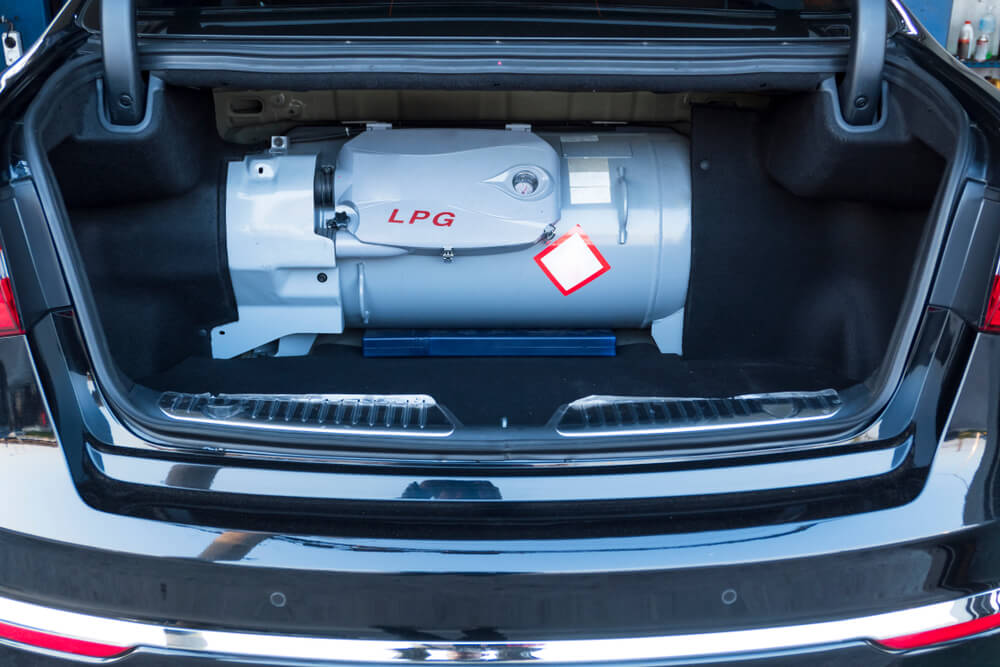Liquefied petroleum gas, or LPG, is a propane- or butane-based fuel used in cars as an alternative to petrol and diesel. Although its popularity in Australia has decreased in recent years, LPG still remains a cheaper alternative at the bowser. That said, there are many factors for car owners to take into consideration before converting over to LPG.
LPG conversions are available for drivers who want to use LPG as their primary source of fuel for their car or simply as an extra option when filling up. Here are the different types of LPG converted engines:
When choosing a type of LPG conversion for your vehicle, it’s best to consult the manufacturer or your owner’s manual to see if your car can accommodate the change.
Price at the pump. LPG is significantly cheaper by the litre. While unleaded and E10 fuels can often top one dollar fifty per litre, LPG is generally below one dollar. These savings can be significant over time, particularly if you drive a lot.
Lower exhaust emissions. Although the fuel is often derived from crude oils, emissions from LPG engines are generally lower than their petrol and diesel counterparts.
Increased engine durability. LPG generally runs cleaner through a car’s engine than petrol and diesel, as it leaves behind less residual waste in the fuel line, which can potentially save drivers’ money on maintenance costs.
High quality standards. LPG goes through rigorous testing before it’s made available to the general public. Properties that are tested include vapour pressure at 40°C, odour, sulfur emissions, volatile residues and various other elements.1

The initial cost is high. Converting your car to LPG costs thousands of dollars, so while you can potentially save money in the long run, it could take some time to recover the initial expense.
Higher fuel consumption. LPG engines tend to require more fuel per kilometre than petrol and diesel cars. According to Bureau of Infrastructure, Transport and Regional Economics (BITRE), LPG cars an average fuel economy of 11.1L per 100km, opposed to diesel (10 L) petrol (10.6L) which are slightly more efficient.2
Size and position of the fuel tank. Fuels tanks for LPG are known to be quite large, and since it needs to be stored in the back of your car, you might find there’s not enough room left in your boot. In other instances, the tank may be placed below the car, meaning it’ll be closer to the ground. This could be an issue while off-roading or even going over speed bumps.
Availability at service stations. Petrol and diesel fuel options are generally available at more service stations than LPG fuel, meaning you might not have as many alternatives if you convert to a fully dedicated gas engine.
Generally speaking, only drivers who have high-performance requirements or drive particularly fast may notice a decline in the performance of their car after converting to LPG. A reason for this is that gas burns at a cooler temperature than petrol, meaning it doesn’t generate as much power inside the cylinder.
Yes and no. While LPG conversion won’t void your car warranty for other claims, any issues caused by your new LPG system generally aren’t covered. For this reason, it’s crucial to make sure your car is suitable for LPG before any conversion takes place.
Recently converted to LPG? We can help you find some of the cheapest LPG prices around your suburb with our Simples app fuel comparison service. All you have to do is enter your postcode, and we’ll find you great prices on fuel in only seconds.
1 BITRE. Fuel economy of Australian passenger vehicles – a regional perspective.
2 Department of the Environment and Energy. Autogas fuel quality standard.